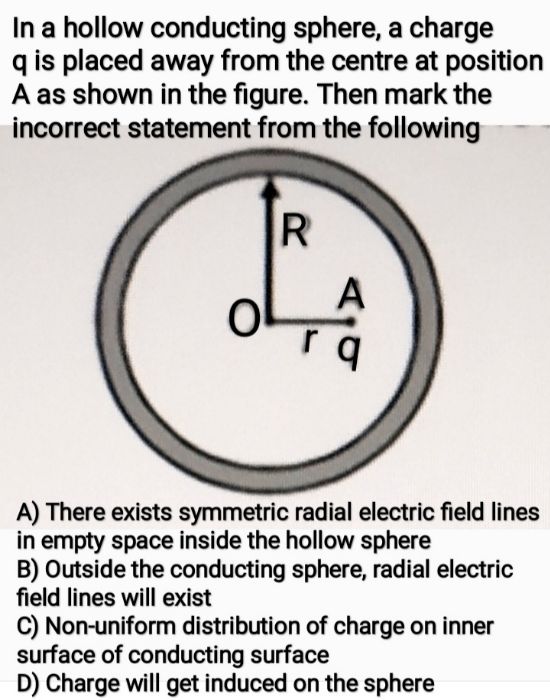CBSE Class 12-science Answered
when some charge given to a material spreads on the entire surface, it is a conductor. how? explain
Asked by goyalpavitarta | 27 Apr, 2021, 13:19: PM
Electric field inside a conductor is zero. We can not have net charge in a given volume inside the conductor
because electric field is zero inside conductor , Hence all the charges given externally to the conductor resides only on surface.
If charges accumulate at one place on a surface of conductor, this will give electric field inside conductor.
Hence in order to get zero electric field inside conductor , the charge on the surface spread over the surface uniformly.
From energy point of view, Chrage on the conductor will seek a configuration that minimizes its potential energy.,
Electrostatic energy of a solid object with specified shape and charge is minimum when charge is spread over surface.
Answered by Thiyagarajan K | 27 Apr, 2021, 14:30: PM
Concept Videos
CBSE 12-science - Physics
Asked by niharvijayvargiya5 | 23 Apr, 2024, 18:40: PM
CBSE 12-science - Physics
Asked by manishakumariroy321 | 10 Oct, 2023, 21:02: PM
CBSE 12-science - Physics
Asked by sp6201522801 | 28 Dec, 2022, 10:09: AM
CBSE 12-science - Physics
Asked by sp6201522801 | 25 Dec, 2022, 09:33: AM
CBSE 12-science - Physics
Asked by carnivalgirl8421 | 29 Jun, 2022, 22:03: PM
CBSE 12-science - Physics
Asked by mb2022138 | 25 May, 2022, 08:37: AM
CBSE 12-science - Physics
Asked by ranjanpriy65 | 01 Apr, 2022, 12:32: PM
CBSE 12-science - Physics
Asked by nailemwangjen79 | 14 Jul, 2021, 09:03: AM
CBSE 12-science - Physics
Asked by prakashseema091 | 31 May, 2021, 15:18: PM
CBSE 12-science - Physics
Asked by deeptykundu03 | 20 May, 2021, 12:28: PM





